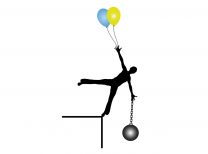Today, we live in a world where stress erodes every facet of our lives. When stress becomes chronic, we are susceptible to a myriad of stress-related disorders, including cardiovascular disease, high blood pressure, some forms of cancer, addiction, post-traumatic stress disorder (PTSD), migraines, sleep disorders, depression, and chronic pain.[sup]1[/sup] In some cases, these illnesses can be so severe that they result in death.
Ironically, the power of the stress-management modalities (breath control, yoga, and meditation) and their central role in health and longevity was something that the ancient Taoists verified more than 2,500 years ago.[sup]2[/sup] Now we know that these modalities play a very powerful role in reducing the levels of unwarranted stress, and energizing and detoxifying the body.[sup]3[/sup]
The salutary effects of these modalities are attributable to the fact that they effect positive changes in the structure and function of the brain.[sup]4[/sup]
One of the most important things that happens in the brain is an increase in the secretion of the “feel-good” neuropeptides and a decrease in the “feel-bad” stress hormone, cortisol. The increase in the “feel-good” neuropeptides enhance memory and learning (serotonin), improve the sex drive and the quality of orgasm (dopamine, oxytocin and testosterone), control appetite and sleep (melatonin and insulin), regulate cardiovascular function, and reduce the levels of muscle tension and pain (ß-endorphin and enkephalin).
Moreover, the practice of these modalities results in an increase in the flow of blood to the left prefrontal cortex. This area of the brain is associated with attentiveness, information processing and the modulation of emotions. Brain wave synchronization and stabilization reverses the activities of the sympathetic (fight-flight response mode) and the parasympathetic (rest, relax and digest mode), so that the normally dominant sympathetic system takes a back seat to the parasympathetic.
A day at the spa or listening to music is relaxing yet the stress-reducing effects are short lived in comparison to the benefits of breath control, meditation and yoga.
By practicing these modalities, you will enjoy deeper levels of relaxation, a dramatic reduction in the intensity of stress, improved memory, increased energy level, weight normalization, improved sleep, decreased pain levels, decreased blood pressure, heightened immunity, and an enhanced capacity to manage the symptoms of depression and addictive behavior.
But above all, these practices teach you how to embark on your journey of self-discovery and well being. A journey that will allow you to resonate better with others so that you can begin to enjoy life to the fullest. A journey that will help you improve your physical and psychological health. A journey that will help you begin to live the life you deserve.
Jaime Casellas, Ph.D. is a Stress Management Specialist, a Certified Life Coach, a Registered Yoga Instructor, and founding director of the Stress Management & Prevention Center in Rancho Mirage. For more on Jaime Casellas, visit www.stressprevention.org, or contact him at [email protected] or by calling (760) 464-2150. His book, Chaos & Bliss—A Journey to Happiness, is available at Amazon.com.
References: 1) Kabat-Zinn, John: Full Catastrophe Living, Bantam, Dell, New York, 1990.2) Reid, Daniel: The Tao of Health, Sex and Longevity, Simon and Schuster, New York, 1998.3) Coulter, David and McCall, Timothy: Anatomy of Hatha Yoga: A Manual for Students, Teachers, and Practitioners, Kindle e-book, 2002.4) Begley, Sharon: Train Your Mind, Change Your Brain—How a New Science Reveals Our Extraordinary Potential to Transform Ourselves. Ballentine Books, New York, 2007.












































Comments (0)